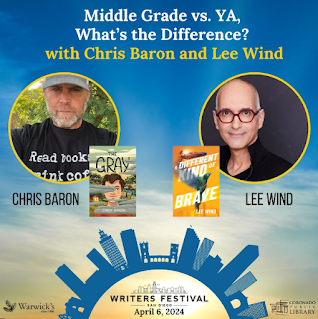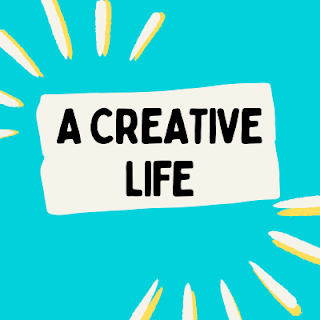In my last post here on the SCBWI blog, I shared quotes from some incredible creators, including Author and Illustrator Todd Parr. He passed along some amazing advice and touched on self-publishing, noting that it wouldn’t be easy but “the option to really be creative has never been more within reach.” That statement sparks joy, doesn’t it?!
When researching publishing options, I found that there was much more information available on traditional publishing. So I decided to talk to some authors who have self-published or used a hybrid publisher to better understand their experiences and share them with you.
Author Christina Williamson has published five books with hybrid publishers. Her first book debuted in 2017 with a company she had full trust in. They were an imprint of Reader's Digest. However, because she was so disappointed with how her book turned out, she didn’t end up marketing or promoting it at all.
“The quality of the end product was poor, and there was a typo even after editing,” she explained.
This would be a nightmare for any author, but she didn’t give up. She conducted more research when looking to publish her next book and worked through the Alliance of Independent Authors.
“At the time, they had a catalog that ranked the various independent publishing houses. That is where I found Gatekeeper Press,” she said. “The alliance gave them an approval (green light) rating. They offered a variety of packages. I could pick and choose what services I wanted (needed).”
She went on to tell me that she was assigned an author manager to help her through the various stages of the process and that the manager was easy to contact and communicate with. She found an illustrator through the press and was very happy with her book in the end.
Christina has now published 4 books with Gatekeeper, including Can Little John Find A Way, and they are available on Amazon. She learned from her mistakes and her persistence paid off. The icing on the cake? She's made a return on her investment.
If you are considering working with a hybrid publisher, you'll want to make sure ticking all of the boxes on this checklist from the IBPA is part of your research process.
Author Blair Northen Williamson self published her first book Island Girls: Free the Sea of Plastic and has a traditional book deal in the works. She told me that she “battled with the decision regarding Indie publishing for a very long time.”
Initially, she had a traditional publishing deal with her manuscript Island Girls. After receiving the first rounds of illustrations from her publisher, she learned that they planned to use computer-generated graphics that were far from the vision they communicated prior to signing the contract.
“There are many other manuscripts I have that I won’t feel as passionate about the exact style when it comes to what the illustrations will look like. I know the importance of an illustrator having creative freedom, but in this particular manuscript – ISLAND GIRLS – this story was about my children, my family, and a very specific setting that I wanted to bring to life,” she explained.
Since her vision for the book didn’t match the publisher’s, Blair got a reversion of rights and began her self-publishing journey. She had upcoming plans to speak at a conference, a golden opportunity to introduce her book to educators and librarians, so she began interviewing self-publishing houses and illustrators.
When asked what the process was like, Blair said it was “A LOT- and it still IS a lot.”
She explained that she spent time looking into everything from the size of the book to the placement of the words on the page to the paper weight. She controlled the entire process.
“Marketing, networking, financial, distribution, having books physically in bookstores… The legwork is all on YOU, the author, with self-publishing,” she explained. “Luckily, I have a big network of people who are excited to help, and I’m a very outgoing person who’s not afraid to ask for help and put myself out there. I think part of that is because I have a book where people really believe in the message.”
Her book does have a great message, still, Blair told me that she had a hard time getting stores to carry it.
“I have flown across the country to pitch in person to APG Book Distributors, and I have a lead where I might decide to distribute Island Girls through that person one day. But right now, stores have to order Island Girls from INGRAM at a huge discount,” she explained.
She’s still working on figuring out distribution.
When asked what part of the process was most difficult, Blair said it was financial. “The financial piece was the hardest to figure out—I had to raise the money upfront and pay for it myself to do it right. I hired Gatekeeper Press to help me. I’m not a graphic designer, but they have a great team there, so I hired them to produce the book.”
She also hired an illustrator, Svitlana Holovchenko, who she said was “absolutely incredible.”
Here’s an amazing part of her story that you’ll be happy to hear. I asked if she made a return on her investment, and she said yes! “Fairly quickly actually.”
And the good news keeps coming. What Blair said next surprised and excited me.
“No one cared that I self-published this book. In fact, there was a level of respect that I received from other authors for having self-published so well.”
I asked Blair what advice she would offer to someone looking to self-publish and she said it all starts with research.
”If you want to indie publish, do research on who you want to go with, the timetable, and what you expect. Interview them and ask them questions. Make sure that you know what you’re getting into before you do it and invest in it. Know that it’s not an overnight situation,” she shared. “Do your work, do your research, there’s so much to learn about the publishing industry, and I haven’t even begun to scratch the surface.”
She added that it’s important to understand marketing, PR, social media, the Amazon author dashboard, royalties, and more. She noted the importance of immersing yourself in the writing community, supporting other writers, and asking for help when you need it.
I spoke to a few other writers who opted for a non-traditional road to publishing and they all shared similar sentiments. If you want to self publish or use a hybrid publisher, it’s completely viable if you’re willing to invest upfront and work very, very hard.
Hugs and happy writing to you!
Ashley's debut picture book The Balloonimals will be published in 2025. She is a former journalist and marketing executive with an MFA in Writing. Ashley has written for various magazines and newspapers, along with a top 10 market television station. She lives in the Boston area with her husband, daughter, and fur baby.


.JPG)






















